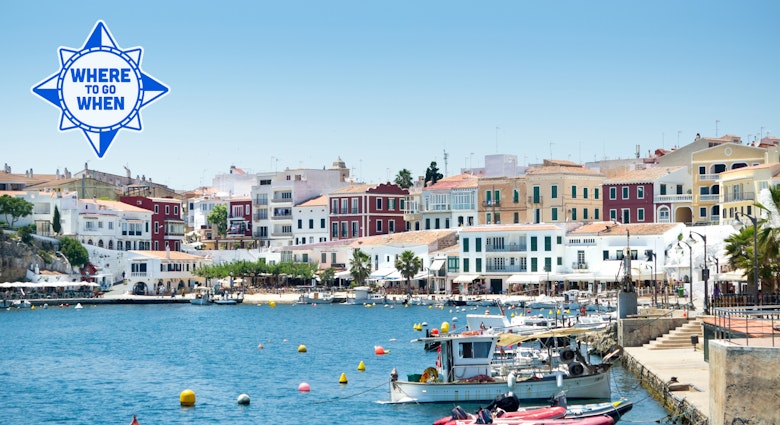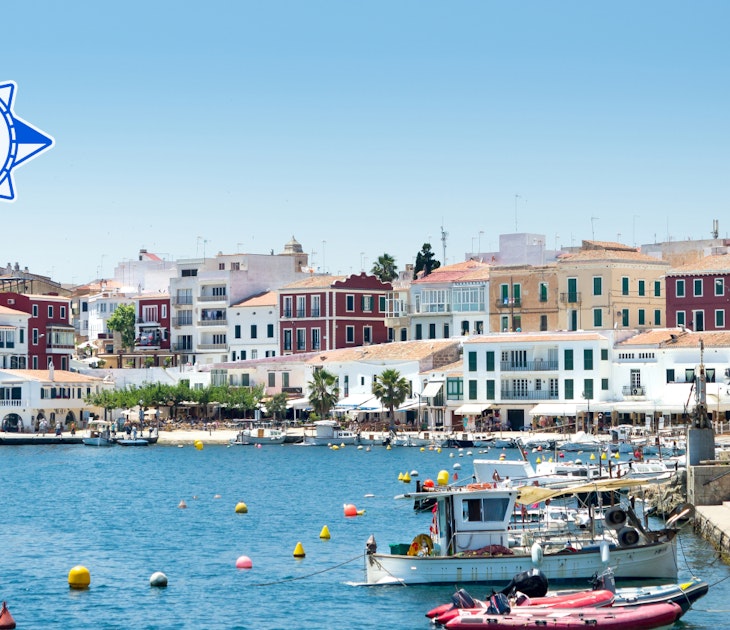

The Millennium Bridge over the Morača river in the centre of Podgorica. Leonid Andronov / Shutterstock
Montenegro’s capital Podgorica is reminiscent of a teenager: a cheerful and lovely companion, yet confused about its identity and having a hard time cherishing its past. Since the city has been repeatedly razed to the ground over the centuries, its historical sites can hardly compete with those in other Balkan capitals. Still, for the last few decades Podgorica – formerly known as Titograd – has been making an effort to maintain the urban image while avoiding labels of any kind.
With recently launched low-cost flights connecting Podgorica with the rest of Europe, most travellers rush through on their way to the stunning Bay of Kotor on Montenegro’s Adriatic coast or the national parks in the country’s northern highlands. But it’s well worth devoting a couple of days to discover the city’s charms and to enjoy its easygoing Balkan lifestyle without the crowds.
Day 1
Morning
Start this journey back in the past, or at least in the part of it that’s been preserved in Podgorica. Enjoy a sip of strong domestic coffee, also called ‘Turkish coffee’, in the Ottoman-era neighbourhood of Stara Varoš (Old Town) – it’s best paired with some apple pie at Pod Volat restaurant. While not as lavish and interesting as the famous ancient cities on the Adriatic coast, Stara Varoš retains its own Oriental charm. Strolling through the narrow streets, you can’t miss the 17th-century Sahat Kula (Clock Tower), one of the few remaining Ottoman buildings that has survived WWII.
The city’s main pedestrian area is only a short walk away, across a bridge on the Ribnica river. Between the National Library and City Hall, meet the former mayor of Podgorica, Marko Miljanov: a monument to this famous general and writer stands here to remind the locals of his notion of čojstvo i junaštvo (humanity and bravery), which has become a sort of Montenegrin credo. Pop into the nearby Galerija Centar, which usually has contemporary art exhibitions worth checking out. Out front, take a breather on probably the most romantic bench in Podgorica, with a statue dedicated to beloved Russian poet Pushkin.
Cross the Blaža Jovanovića bridge on the Morača river for a great view of two of Podgorica’s landmarks: on the right, the impressive cable-stayed Millennium Bridge, the city’s more recent symbol, and Hotel Podgorica (hotelpodgorica.co.me) to your left. Built on a cliff overlooking the confluence of the Morača and Ribnica rivers, with a facade made of a thousand stones, the hotel is one of the most famous works by the first Montenegrin female architect Svetlana Kana Radević.
Afternoon
Grab a lunch at Hotel Podgorica’s sunny terrace; it’s time to enjoy some fine Montenegrin meals. Treat yourself with popeci, a local meat delicacy, or if you’re a vegetarian, try the deliciously cooked raštan (a type of cabbage, but darker and crispier). Once refuelled, take a walk to the place where the city’s two rivers merge, a popular hangout by the stairs and the old stone bridge over the Ribnica.
From here, the St Peter of Cetinje Boulevard leads to the Podgorica City Museum (pgmuzeji.me). Its modest but valuable collection includes artefacts from numerous archaeological sites, traditional national costumes, as well as some of the most important works by famous Montenegrin artists such as Petar Lubarda and Risto Stijović.
Hidden underneath the Ribnica bridge – right next to the museum building – is a charming little cafe-bookstore called Knjižara Karver, housed in the old Turkish bath. It’s an ideal place for some afternoon reading over a coffee. If you prefer more action, head north to the Gorica hill to explore a charming forest park and see its monument dedicated to the WWII Partisan fighters.
Evening
Before the night falls over Podgorica, visit the Cathedral of Christ’s Resurrection west of the Morača river. In addition to the famous biblical scenes, its frescoes point out stories of importance for local history, and include a controversial recent depiction of Hell featuring Marx, Engels and Yugoslavia’s lifelong president Tito together with some guys that look extremely like members of Montenegro’s everlasting governing party.
On your walk back to the centre, take a different bridge to cross the Morača (our favourite is the so-called Suspension Bridge, a small pedestrian crossing offering a nice view of the other, relatively newer ones). Through the pleasant Njegoš Park, dedicated to Montenegro’s most significant Prince-Bishop and poet, you’ll reach Bokeška and Njegoševa streets where you can take your pick from numerous pubs, cafes and restaurants with lovely gardens to end the day.
Day 2
Morning / Afternoon
It’s time to explore the city surroundings. If you’re feeling adventurous, rise early and set off to the north for the ‘Circuit around Korita’. The first signposted panoramic road in Montenegro starts in Podgorica, passes through Kuči region and snakes through the cliffs of the spectacular Cijevna canyon. It takes less than two hours to complete the full circle (65km) by car, but consider covering at least some of it on foot. The must-see is the Sokolovo Grlo (Falcon’s Gorge) viewpoint, offering magical views over the Cijevna canyon – and it can only be reached by hiking!
The stylish, traditional Stara Kuća (starakuca.me) restaurant is an excellent place to stop for a lunch break and to try the local cuisine. Afterwards, while away the afternoon exploring the route and its picturesque Orthodox, Catholic and Muslim villages.

If you prefer a more leisurely start to your day, grab a taxi to visit the endless Plantaže (plantaze.com) vineyards. Once there, take the tourist train through the amazing landscapes of Ćemovsko Polje, popular among wine lovers in the know mostly for the indigenous varieties such as Vranac and Krstač. The tour ends with a special experience: a visit to the Šipčanik wine cellar (including wine tasting and some local food). This old military airbase got a new look in 2007; once you get inside, you’ll actually walk through a wine tunnel at an average depth of more than 30m below ground.
After this treat, continue the journey to the Cijevna river to admire Montenegro’s own Niagra Falls, where this powerful river disappears into the canyon’s darkness. Here, you can relax at the Kuća Rakića restaurant and enjoy its traditional lunch menu. In the afternoon, take a ride to the late 19th-century Orthodox Dajbabe Monastery. The original church is actually situated in caves; it was additionally expanded and today it has the shape of a cross inside the hill.
Evening
Back in Podgorica, start from the park that once housed the Winter Palace of King Nikola I to discover the right bank of the Morača. Just across the street from University Park with its massive monument of St Peter of Cetinje (a 6.8m-tall statue that weighs nearly three tons) is the Capital Plaza area which, among many trendy spots, boasts the first Hard Rock Café in the Western Balkans.
To the north, just off the St Peter of Cetinje Boulevard, the Roman Square is also dotted with cafes and gardens where you can chill out with a bottle of Nikšićko, the favourite locally made beer; plenty more hot spots for a casual night out are found next to the cathedral. Street Bar (facebook.com/StreetBarPodgorica) is a fine choice to end the evening with some smooth live jazz.
Explore related stories


 SportsThese are the cheapest capital cities in which to hire a car in Europe
SportsThese are the cheapest capital cities in which to hire a car in EuropeFeb 10, 2020 • 2 min read


 Tips & AdviceMontenegro vs Albania: how to choose between two Balkan beachfront countries
Tips & AdviceMontenegro vs Albania: how to choose between two Balkan beachfront countriesOct 4, 2024 • 7 min read


